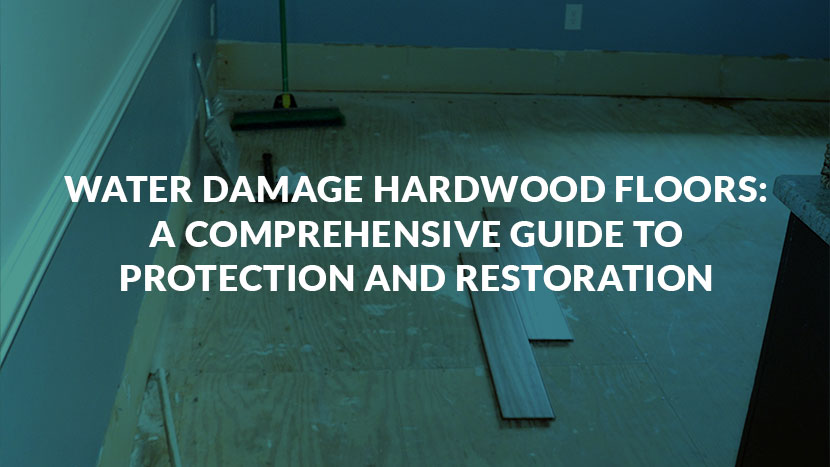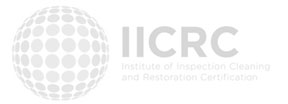
When water meets hardwood flooring, the result can be devastating to both your home’s aesthetics and its value. Water damage to hardwood floors is a serious problem that requires immediate attention and professional expertise to prevent long-lasting damage.
Understanding the severity of water damage and knowing how to respond can mean the difference between a simple repair and a complete floor replacement. CLEAR Restoration is here to help you understand the impact of water damage on hardwood floors and the crucial steps needed for effective restoration.
[Related: Types of Water Damage: What You Need to Know]
Understanding Water Damage in Hardwood Floors
Water damage to hardwood floors manifests in several ways, each requiring specific attention and restoration approaches. The three main types of water damage are:
Surface Damage: This occurs when water is quickly removed and hasn’t had time to penetrate deeply into the wood. Surface damage is the least severe and most manageable form of water damage.
Deep Penetration: When water sits for extended periods, it seeps into the wood fibers, causing expansion and potential structural issues.
Structural Compromise: The most severe form of water damage occurs when water has completely saturated the wood and affected the subfloor beneath.
Common Causes of Hardwood Floor Water Damage
Understanding the root causes of hardwood floor water damage is crucial for both prevention and proper response when incidents occur. By identifying these potential threats early, homeowners can take proactive steps to protect their valuable hardwood flooring investments. Some of the common causes of hardwood floor water damage are:
- Natural disasters and flooding
- Plumbing failures
- Appliance malfunctions
- Roof leaks
- HVAC system issues
- Excessive humidity
At CLEAR Restoration, we’ve encountered and successfully addressed water damage from all these sources and more. Regular inspections and maintenance of your home’s systems can significantly reduce the risk of water damage to your hardwood floors. However, when the unexpected occurs, our team is available 24/7 at 225-245-3575 to provide expert restoration services and help prevent further damage to your valuable flooring.
Signs of Water-Damaged Hardwood Floors
Recognizing the signs of water damage in hardwood floors can prevent extensive damage and reduce restoration costs. Here are the key indicators:
Visual Indicators:
- Cupping: Edges of boards rise higher than their centers
- Crowing: Centers of boards rise higher than their edges
- Buckling: Boards completely separate from the subfloor
Physical Changes:
- Discoloration and dark spots
- Warping and uneven surfaces
- Soft or spongy areas
- Mold growth
- Musty odors
Professional inspectors look for both evident and subtle indicators that might escape the untrained eye. The progression of hardwood floor water damage follows predictable patterns, but the speed of deterioration can vary significantly based on environmental conditions and wood species.
How to Respond Immediately to Hardwood Floor Water Damage
When water damage occurs, time is of the essence. The first 24-48 hours are crucial in preventing permanent damage to your hardwood floors. Professional restoration companies emphasize that every hour of delay increases the likelihood of irreversible damage and the potential cost of repairs. Here’s what you should do immediately:
- Remove standing water using wet vacuums or absorbent materials: The process should be methodical and thorough, working from the edges toward the center to prevent spreading water to unaffected areas. Professional-grade water extraction equipment can remove water from both visible surfaces and hidden spaces between boards.
- Dry the affected area using fans and dehumidifiers: Strategic placement of air movers is crucial for effective drying, and the process should continue until moisture meters indicate safe levels. The drying process must be carefully monitored to prevent over-drying, which can cause additional damage to the wood.
- Control indoor humidity levels to prevent secondary water damage from condensation: Optimal humidity levels should be maintained between 30-45% during the restoration process. Regular monitoring with humidity meters helps ensure conditions remain favorable for drying.
- Contact professional restoration services immediately: Attempting DIY solutions without proper knowledge can often lead to more extensive damage and higher repair costs.
At CLEAR Restoration, we understand the urgency of water damage situations. Our 24/7 emergency response team is always ready to help protect your hardwood floors from further damage. Call us at 225-245-3575 for immediate assistance, and our technicians will be there equipped with industrial-grade equipment and extensive experience in hardwood floor water damage restoration.
How to Prevent Water Damage to Your Hardwood Floors
Implementing preventive measures is crucial to protect your hardwood floors from future water damage. A proactive approach to maintenance and protection can save thousands in potential repair costs. Regular inspections and maintenance routines should become part of your home care schedule. Here are essential preventive measures:
- Regular maintenance of plumbing systems, including annual professional inspections
- Proper ventilation system installation and maintenance
- Quick response protocols for spills and water incidents
- Regular inspections of potential water sources near hardwood floors
- Humidity control through proper HVAC maintenance and dehumidifier use
Each of these measures contributes to the long-term protection of your hardwood floors from water damage.
[Related: Should I Replace Water Damage Floors or Repair Them?]
Contact Us Today for Hardwood Floor Water Damage Restoration
Water damage to hardwood floors requires immediate, professional attention to prevent lasting damage. CLEAR Restoration offers comprehensive water damage restoration services, ensuring your hardwood floors are restored.
Don’t let water damage compromise your beautiful hardwood floors. The longer you wait to address water damage, the more extensive and expensive the repairs become. Contact CLEAR Restoration at 225-245-3575 for professional hardwood floor water damage restoration services.



